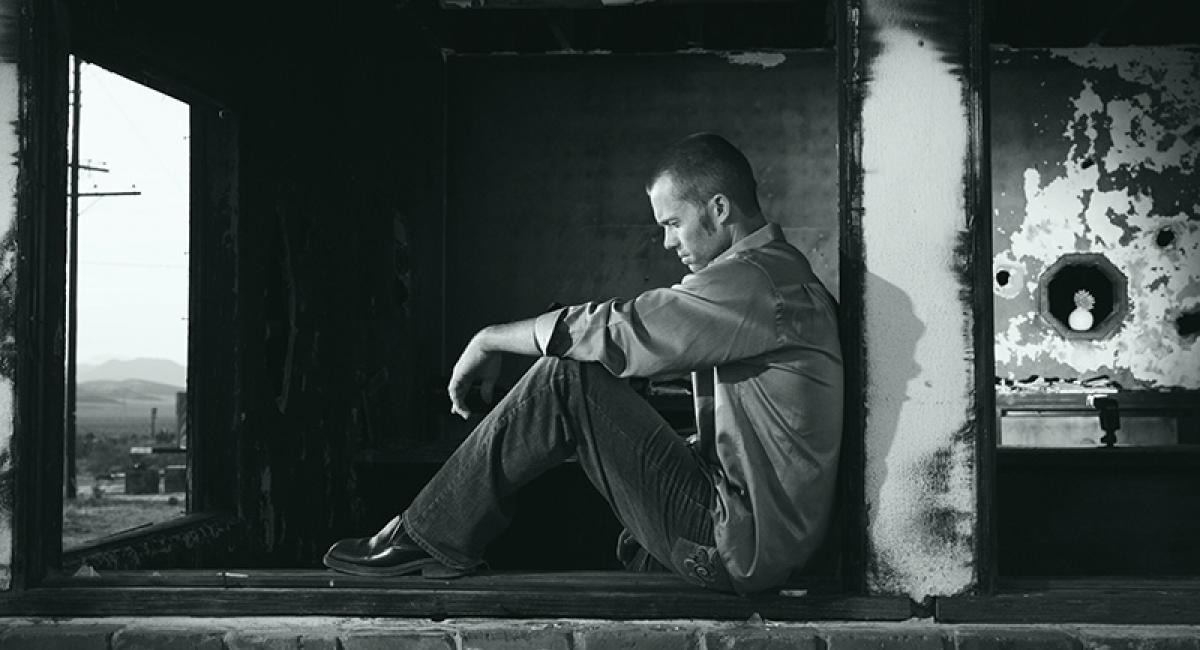Schizophrenia and psychosis
Can Schizophrenia Be Cured?
One curious research finding, which has been confirmed by several major studies in five-year follow ups, shows that about 64 per cent of people in third world countries recover fully after a first schizophrenic breakdown. Yet the comparative figures for the developed world show that only about 18 per cent recover fully.
By looking at these findings from the human givens perspective, however, we can deduce some very significant things from them.
For example, in third world countries, there is a much stronger tradition of emotional and family support and greater tolerance for personal psychological crisis, which may therefore be less likely to spiral out of control. There are also more low-stress manual and handicraft jobs, and more meaningful tasks that people need to perform for their subsistence, that facilitate recovery in a close-knit community.
It is much easier, therefore, for people to meet their emotional needs for intimacy, support, status and validation in these situations, than in the culture we have made for ourselves. Clearly, an environment where emotional needs are met is a potent aid for helping people recover from psychological disorders, even ones as seriously incapacitating as schizophrenia.
An additional factor is that, in third world countries, the use of modern neuroleptic drugs to treat psychosis is minimal, whereas in the Western world they are the main treatment offered by the psychiatric profession, despite the strong evidence that these heavily promoted drugs hinder recovery, increase the rate of relapse and have a significant risk of causing severe brain damage.
Psychiatric theorists are at a loss to explain schizophrenia. The various simplistic ideas that it was caused by specific deficiencies in brain chemistry, such as ‘overactive dopamine systems’, have not been supported by research, despite the strident and misleading claims of some drug companies to the contrary.
In our book, Human Givens: The new approach to emotional health and clear thinking, we described how the REM brain state, which underlies dreaming, is separate from the process of dreaming and dream content. It is also clear that the healthy brain is organised to keep the dream process separate from the waking state, which is why we find it so difficult to remember dreams. We have shown how the behaviour of a person in a hypnotic state clearly mirrors phenomena of the REM state, such as muscle paralysis, dissociation, imperviousness to pain, and amnesia for the event after ‘waking’.
A psychotic breakdown is almost always preceded by an overload of stress and severe depression in a person’s life, which, as we know, results in excessive REM sleep. We are now convinced that, when people are in psychosis, they are in fact trapped in the REM state, a separate state of consciousness with dreamlike qualities. In other words, schizophrenia is waking reality processed through the dreaming brain.
To illustrate this, we only have to look at a number of typical schizophrenic behaviours and experiences and see how they relate to the REM state. Patients in a psychotic state often describe weird relationships with bodily feelings. One said that her legs felt empty: another that her arms didn’t belong to her. This is a well-known REM state phenomenon and is also noted in hypnosis: patients may feel that their bodies are dissolving because, in the dream state, most sensory perceptions about the body are shut out.
It is also known that people with schizophrenia are unusually resistant to pain: even more so during severe psychotic episodes. One patient jumped out of a second storey window of a hospital, broke both his ankles, and walked to the shops oblivious of the damage he had done — damage that would have caused excruciating pain for any person in a normal state of mind.
Again, this imperviousness to pain occurs in the REM state while dreaming, as we are cut off from sensory information. (Anyone who has woken up in agony because a limb, or ear, has been lain on in an unnatural way for a long period during dreaming will recognise this. The pain this causes is only noticed after you wake up.) It is this fact that is exploited when hypnosis is used for pain control or anaesthesia during surgery.
Psychotic patients may also talk about hearing voices. In the dream state, which is the province of the right hemisphere of the brain, people are not usually capable of independent thought, the province of the left hemisphere, because the mind is ‘locked’ into the metaphorical script of the dream. But if an individual is trapped in a waking REM state, with waking reality happening around them, there is still likely to be activity in the left hemisphere of the brain.
We suggest that, because the REM state operates through metaphor, the only way it could make sense of these independent left brain thoughts would be to create the metaphor of hearing voices, or being watched, or spied upon by aliens — which easily becomes paranoia.
The visual illusions or delusions associated with schizophrenia are totally characteristic of the dream state, which generates hallucinatory realities that we believe in unquestioningly for the duration of the dream. Stage hypnotists make use of this when they put subjects into what is in effect a psychotic state, and induce them to believe that they are someone else or that non-existent people and objects exist.
Rapid eye movements are often seen to occur in psychotic states, which, of course, are the defining sign of the REM state. Psychotic patients also very quickly convert thought into sensory experience, with the result that they can become highly emotional almost instantly. When recalling a distressing memory, for example, they can be instantly transported right back into that memory and re-experience the emotions connected with it. That phenomenon, too, is a characteristic of the dream state, when arousals from the emotional brain trigger a thought pattern, in the cortex, which is immediately converted into a sensory metaphor — the dream.
It is not surprising, then, that psychotic patients not only talk in metaphors but live them out, which explains their often bizarre speech and behaviour.
The REM state, as we have explained, is in effect a reality generator. It creates all kinds of perceptions in our dreams, but these are illusory perceptions — vivid metaphors. One psychotic patient actually described herself as “being trapped in the land of illusion”. Indeed, we know from talking to psychotic patients in their saner moments that they readily recognise that they are trapped in a dreaming state.
We suggest that we can use this insight to help people make sense of their psychotic experience. Ordinarily, there is ongoing interplay between the left and right hemispheres of the brain.
We can help psychotic patients dip out of the dream state into the more analytical side of their brains by the type of questions we ask them and by talking about what is concerning them; and by connecting with their metaphors and attempting to change the meanings these have for them. They can then start to better understand what is happening to them and spend more time in normal, waking reality.
When we have made these sorts of observations about psychosis at Human Givens College seminars, they have on occasion been heard by people who themselves have had a psychotic breakdown and recovered. These people have all responded extremely positively, even thankfully, to this understanding of their experience. (Indeed, we published a remarkable letter, sent to us by someone who had had a psychotic breakdown and heard of this explanation in our book, Human Givens.)
In our preliminary investigations, using these concepts, we have found that psychotic patients calm down when they realise there is an explanation for what is happening to them. When calm, the psychotic phenomena become less threatening and less intense. Then we can start doing what many traditional third world countries seem to do so much better — re-orientating people towards getting their emotional needs met and creating strong support structures for them.
Being unhappy, stressed and depressed is a strong predictor of later mental illness. This new understanding of what psychosis is, means we can set out practical guidelines for treating it and thereby reduce the prevalence of severe breakdowns and increase the recovery rate dramatically when they do occur.
We are saying, then, that extreme stress, anxiety and depression lead to psychosis, where the patient’s brain can no longer distinguish between the metaphorical reality of the dreaming process and the way a brain normally manages to order reality. If we are right, it follows that, if people were treated more effectively for stress overload and depression by psychotherapists trained to be effective using the human givens approach, the depression would lift in most cases and not degenerate into psychosis.
Because psychotic people are so hypersensitive to metaphor, health workers need to know when working with them how to use metaphorical language that encourages left hemisphere activity. They need to know how to reduce their patients’ arousal levels with calming metaphors. Conversely, they need to consciously avoid metaphors that may remind patients of their predicament, flipping them back into their right neocortex and psychosis. This is a specialist skill that can be taught. They also need to consider that their psychotic patients’ metaphorical language and behaviour represent emotional needs not being met, or that they are attempts to express what it feels like to process waking reality directly through the REM state.
In addition, the skills of occupational therapists need to be given much greater prominence in the treatment of these patients, who need to connect to reality in disciplined, concrete, purposeful ways: by gardening, cooking, making things, doing craftwork etc. Their daily routine also needs a clear structure and discipline.
But, above all, as a society we need to ensure these vulnerable people receive effective psychotherapy more quickly — before stress, anxiety and depression completely overload their dreaming mechanism and too much damage is done. Prevention is the better course wherever possible.
Enormous savings could be made if those using less effective counselling and psychotherapy methodology were trained so that they could act quickly to stop stress, anxiety and depression triggering major breakdowns in those genetically predisposed to developing psychosis. In other words, therapists need to work with the givens of human nature, not ideology, profit motives (drugs are not the only way to lower the arousal that puts pressure on the dreaming brain), or bureaucratic convenience. We predict that, if such an approach were adopted, people in the West, as well as in the East, could have fewer psychotic breakdowns and higher recovery rates from schizophrenia.
Further learning
Online courses:
Explore our articles and interviews
Latest Tweets:
Tweets by humangivensLatest News:
SCoPEd - latest update
The six SCoPEd partners have published their latest update on the important work currently underway with regards to the SCoPEd framework implementation, governance and impact assessment.
Date posted: 14/02/2024
2024 Conference
Our next in-person HGI Conference, is being held on the weekend of 20th and 21st April 2024













